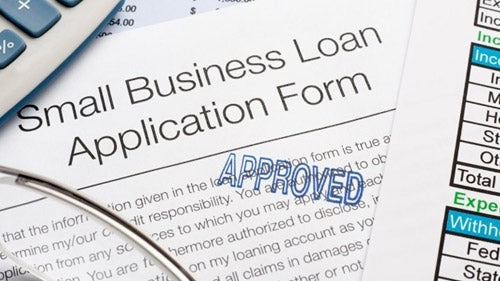What Do Lenders Look At When Evaluating My Loan Application?
By: Kevin Sasser

Demand for business loans remains near an all-time high. As such, lenders and other types of funding providers have as much business as they can handle and can be more selective on which businesses they fund. For the past several years, borrowers have had the luxury of weeding out lenders. Now the lenders are in a position to weed out the borrowers. For William Morgenstein, president of Marquesa Funding, a few simple questions can immediately eliminate a potential borrower. “The most obvious is asking someone what his or her credit rating is,” he said. “You’ll ask and they won’t know or will tell you something vague. A good broker will sense something that isn’t forthcoming and will abandon the application almost immediately.” Experience is a second factor. “People will go into business, but lack the fundamental skills to actually run a business,” Morgenstein added. “They might be good at certain parts of it, but become lost in other key areas of the operation – lenders today will recognize that immediately.” Morgenstein also likes to see some financial commitment, or “skin in the game”—financial evidence that a borrower stands to gain from the business, and has something tangible to lose if the business doesn’t perform. Lenders are also looking very hard at cash flow, he said: “They’re less worried about the (profit and loss) statement. More important is the cash flow statement.” Below, we’ve listed the most common factors cited in lenders’ decisions to offer credit to a business:
Your Business’ Credit:
Lenders will review your firm’s credit rating with Experian, Dun & Bradstreet, or other rating agencies, to see who you are doing business with, how long you’ve been in business, your company’s payment record, and how much debt you’re carrying.
Your Personal Credit:
Your personal credit record can be a flag for a loan to your business. If you’re having trouble making payments on your own debts—late car payments, mortgage payments, student loans or credit cards—then lenders may fear that you might allow your business loans to default before your personal loans. Personal credit scores below 680 are considered subprime, and may causes problems for your business funding.
Collateral:
Depending on the type of financing, lenders and funding providers may appraise the value of your collateral in different ways. Conventional lenders can make judgments about the value of your business and its assets based on the present value of its current and future cash flow. Hard money lenders are far more interested in the resale value of your property, and typically lend at a lower loan-to-value rate than conventional lenders.
Loan-to-Value (LTV) Ratio:
LTV Ratio is the amount your business plans to borrow, divided by the value of the asset you plan to purchase. If you’re buying property, or a business, then that value is used in the denominator. Most conventional lenders will require a loan to capital ratio under 60 to 70 percent. SBA loans allow for much higher values, up to 100 percent.
Owner’s Equity:
This is a similar consideration to collateral. Lenders want to know that the borrower has “skin in the game,” and that their fortunes will rise or fall depending on the success of the business.
Cash Flow:
Cash flow is the most common measure, and one of the stronger items for consideration when applying for funding. Put simply, a lender wants to know that you’ll be making more money with a loan than without it and have the ability to repay your obligations. Your cash flow statement will also validate your claims on the use of funds, whether it is to invest additional capital in your business or cover operating expenses.
Debt Coverage Ratio (DCR):
The DCR is Net Operating Income divided by your annual loan payment, and represents the amount of money you can reasonably expect to afford to pay on business loans. Depending on the lender, DCR can be more important than your loan-to-value. Most lenders are looking for a DCR of 1.2 or better, which is to say, operating income at least 20 percent greater than your total debt burden.
Application History:
Normally, shopping around widely for a good loan makes perfect sense. Not so for business loans. Potential borrowers have inundated lenders with competitive offerings. When a lender does a credit check on an application, that lender can see a record of all the other credit checks that other lenders have performed, regardless of whether a loan was approved or denied. Lenders tell us that seeing multiple credit checks by their competitors on an applicant is a red flag and is perceived to be an indication that the client may have been turned down by the other lenders.
This page might contain affiliate links, so we may receive a small commission if you make a purchase after clicking on the link.
11420 Views












